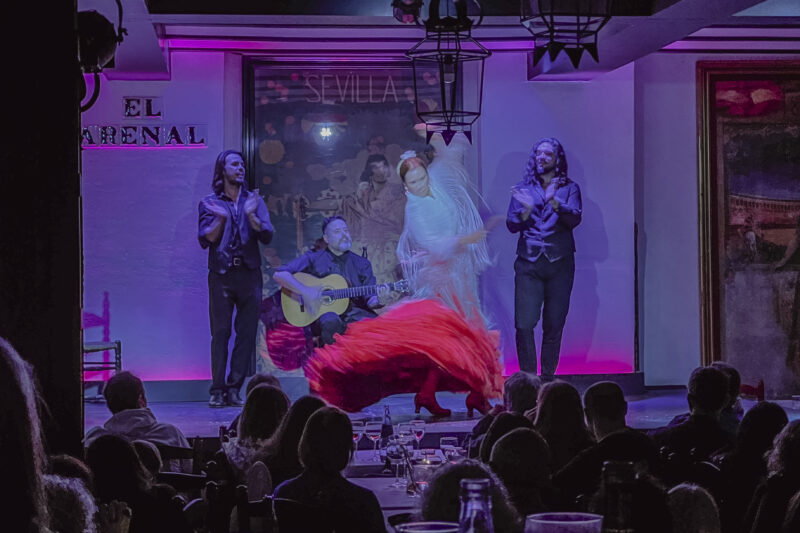City trip to Seville, the jewel of Andalusia
Welcome to Seville, the magnificent city on the Guadalquivir River with a history dating back to the Phoenicians. Be dazzled by breathtaking Moorish-style palaces, enjoy delicious tapas, drink coffee on a terrace under the orange trees, wander endlessly through the labyrinth of narrow streets, climb the Giralda and experience the soul of Andalusia in a riveting flamenco show. One thing is for sure – Seville is the jewel of Andalusia and the ideal destination for your next city break!
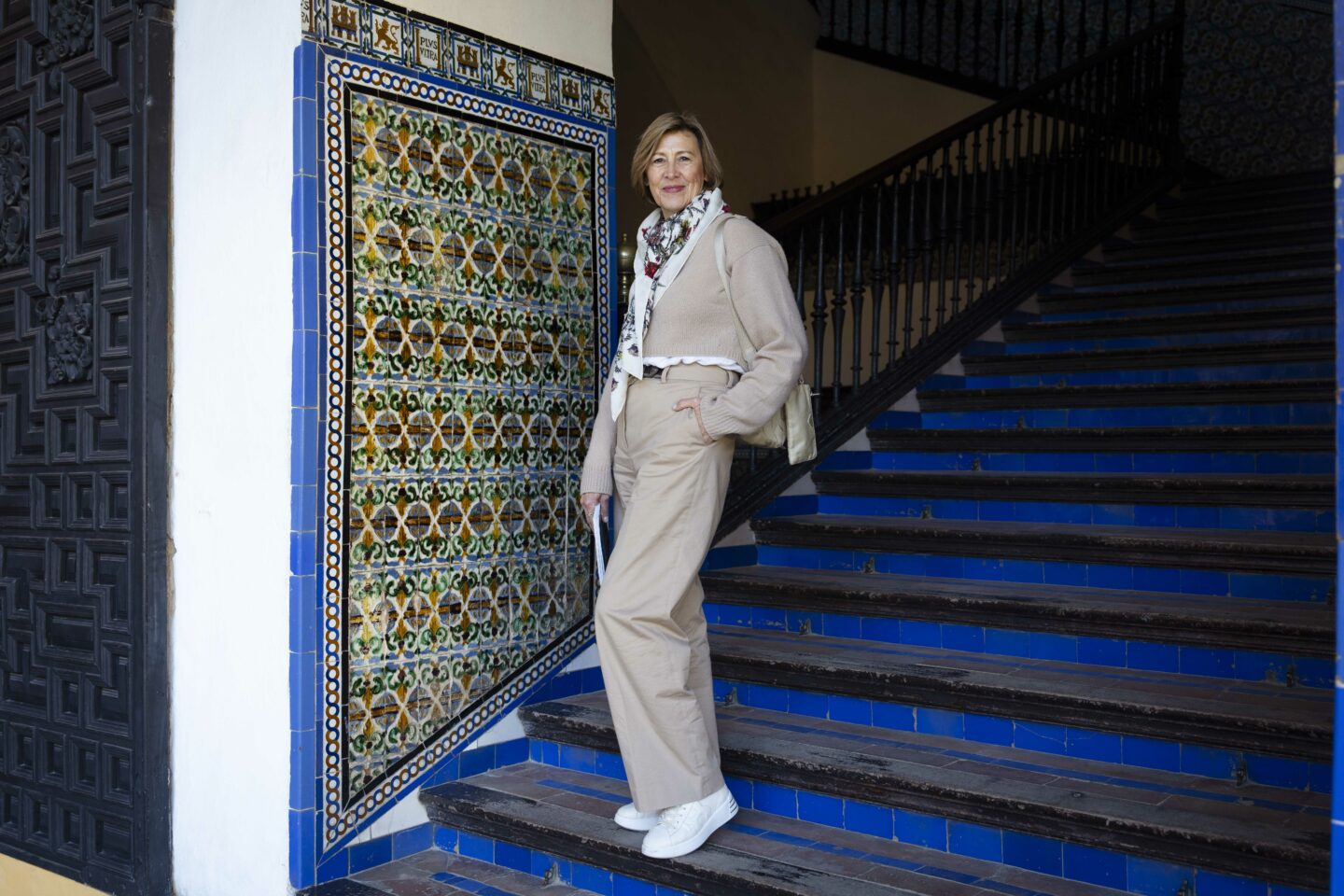
Santa Cruz: impressive monuments and delightful strolls
Seville is a vibrant city, divided into several districts each with its own flair. Santa Cruz is the historic heart of the city, where you'll find some truly imposing monuments, as well as colourful squares and streets that are the perfect place for a lovely stroll.
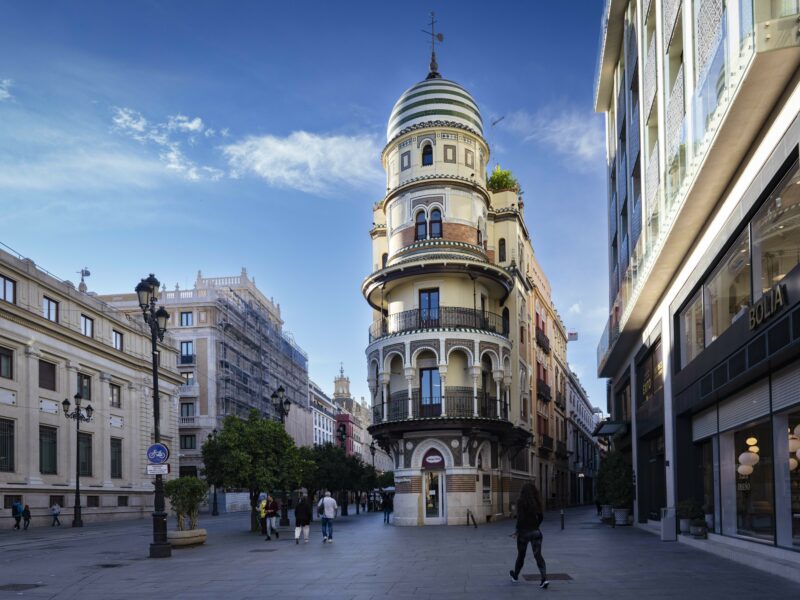
Real Alcázar: seat of power
The Real Alcázar was built in the 11th century as the power centre of the Islamic territory of Al-Andalus. Over the centuries, the palace has evolved in step with the world outside its walls. From Eastern caliphs to Western monarchs, the leaders of Seville all fell for the palace's splendour, and each helped build and add to it in his own style.
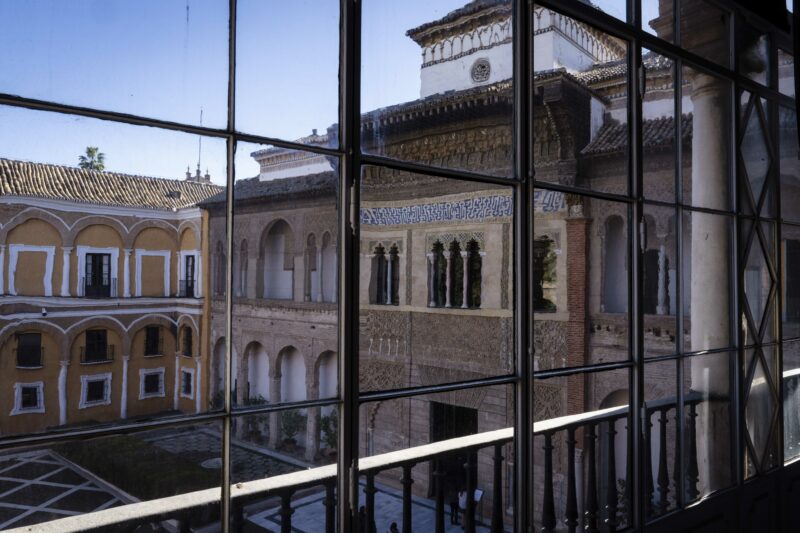
The Muslim Alcázar
After the Caliphate of Córdoba fell, the Moorish Almohads settled in Seville and were the main force behind the growth and development of the Muslim Alcázar from the 12th to mid-13th century. Sadly, not much of this remains today. The small Patio del Yeso is still there, with access to the courtroom, and the arches between Patio de la Montería and the Patio del León, which everyone passes through when entering the Real Alcázar.
The Gothic Alcázar
Back in 1248, King Ferdinand III of Castile kicked out the Muslims and set up residence in the Alcázar. He didn't live long after taking the palace, though. His son and successor, Alphons X, built a new palace in medieval Gothic style on the ruins of the old Almohads' palace. The architectural style was a symbol of the conquest of Islam. You can still see the original vaulted ceilings intact in the Sala de los Fiestas. Alphons X also had the square tower and crenellated walls of Gothic palace built.
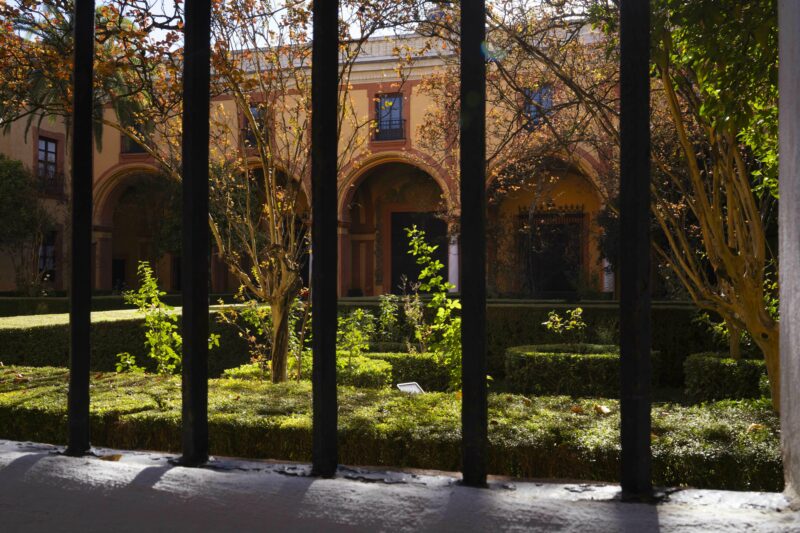
The mudejar Alcázar
The mudéjar palace is definitely the best part of your visit to the Real Alcázar. Peter I, the Cruel, grew up in the Alcázar in the second half of the 14th century in an atmosphere of tolerance toward Muslims and Jews. He built his palace in mudéjar style, an architectural style that reflects the Christian interpretation of Islamic architecture. The spectacular palace was built entirely by craftsmen of Arab descent who had settled in southern Spain. Around the gorgeous Patio de las Doncellas, you'll find the king's official rooms, including the impressive Salón de Embajadores with its amazing dome ceiling. The intimate Patio de las Muñecas gives you access to the private chambers of the monarch and his family.
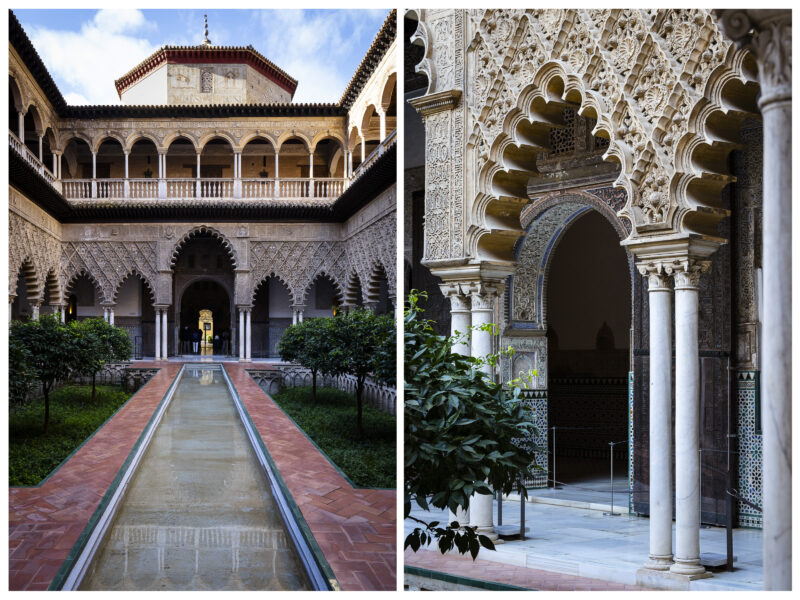
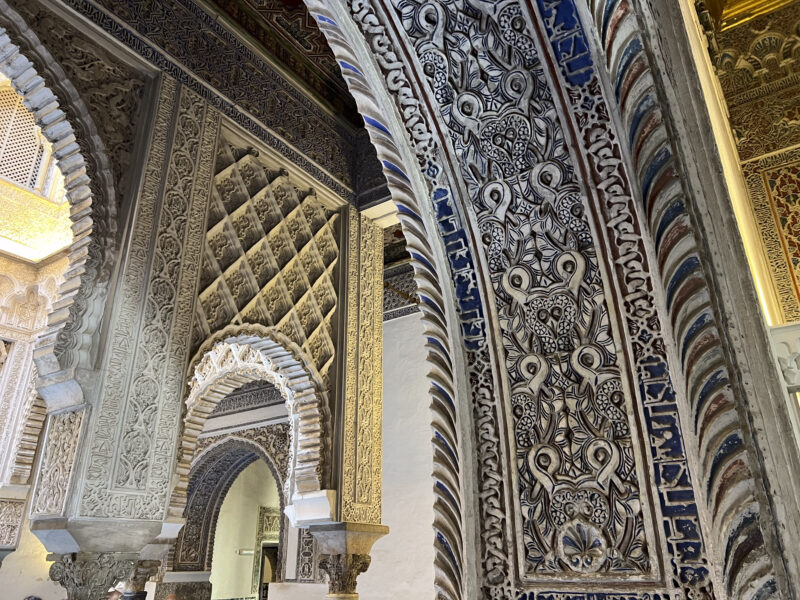
The Alcázar during the Renaissance
The arrival of Ferdinand II and Isabella I marked the beginning of Spain's world domination and Seville's golden age. Under Charles V and Philip II, the Alcázar underwent opulent renovations that added Renaissance-style arches, columns, frescoes, and colourful wall tiles. The Muslim gardens also received a makeover, adding mythological elements, among others.
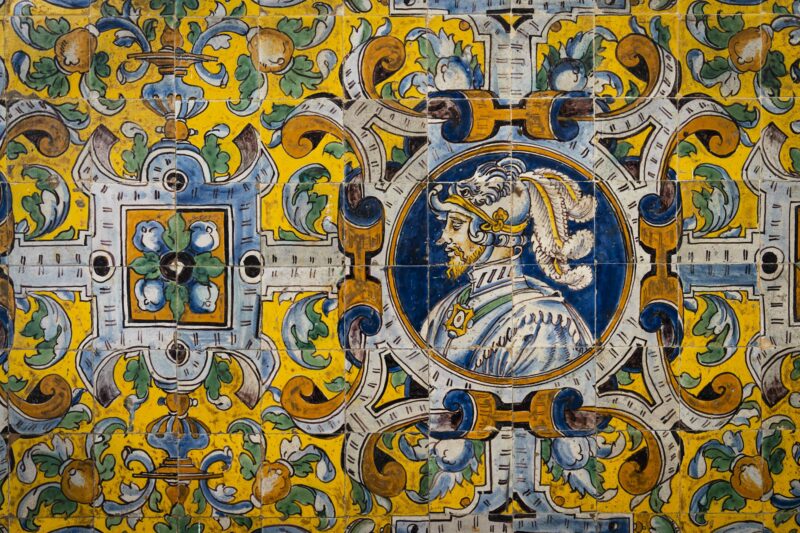
Spain's decline as a global power
Spain lost its colonial empire in the early 19th century after the Spanish-American War of Independence. For centuries, riches from overseas financed magnificent structures in the homeland, but those cash flows were running out. The then-current Queen Isabella II donated the Alcázar to the Dukes of Montpensier. Restoration work was done on the Alcázar, and the gardens were elaborated in the style of Romanticism with the addition of pavilions and fountains.
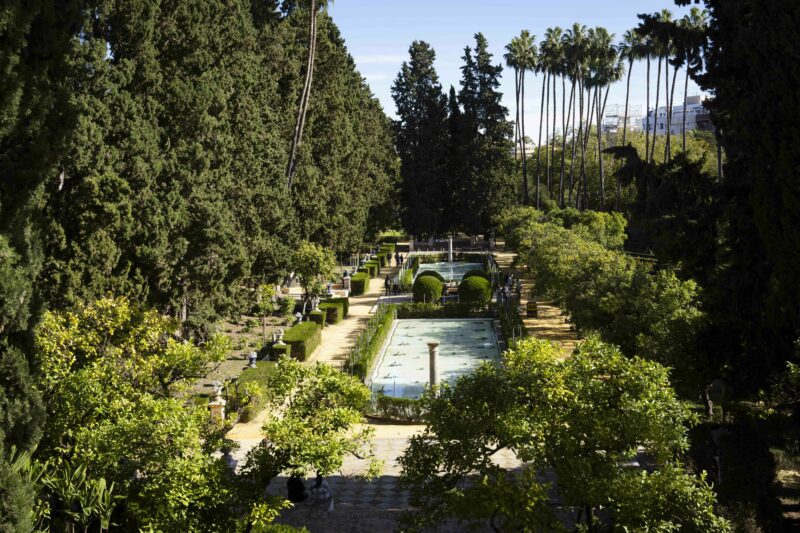
The Cathedral with its Giralda
Seville's cathedral was built in the 15th century on top of an old Almohad-mosque. You can still see traces of the mosque in the lush Patio de los Naranjos and the cathedral's tower, the Giralda, which was originally the mosque's minaret.
The clergy of Seville had big plans for their cathedral. And big is what they got. The cathedral's construction took more than a hundred years to complete, and it ended up being the largest Gothic cathedral of the Christian faith worldwide.
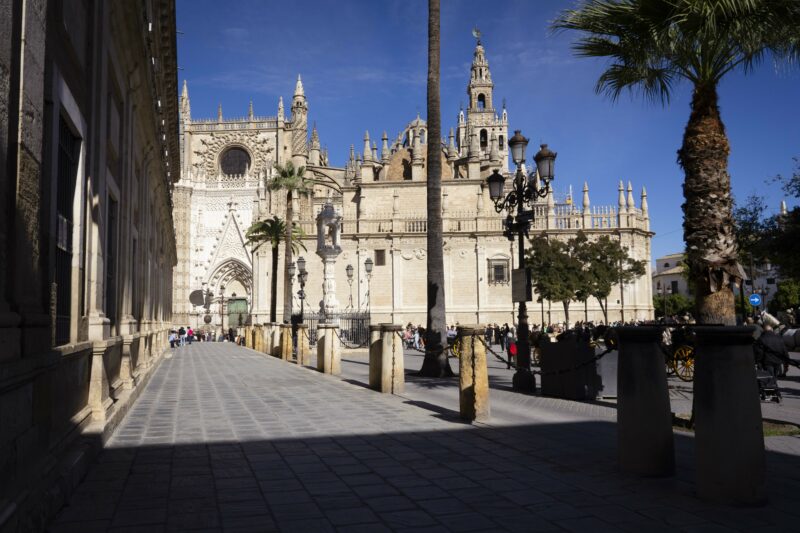
Inside the cathedral
The chapels along the nave are filled with art treasures, but the golden altarpiece is truly breathtaking. It's 18 meters high and has 44 reliefs depicting Christ's message. The altarpiece is guarded by an imposing gate in wrought iron from the 16th century, which unfortunately doesn't allow for a close-up viewing experience.
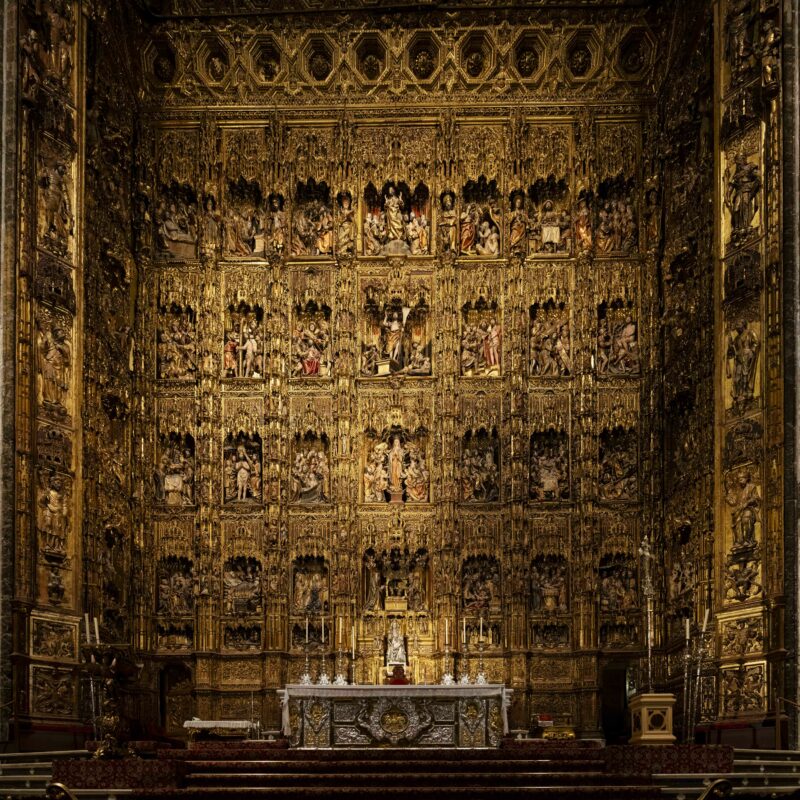
Another must-see is the tomb of Columbus, which is flanked by four bearers representing the kingdoms of Castile, León, Navarre, and Aragon.
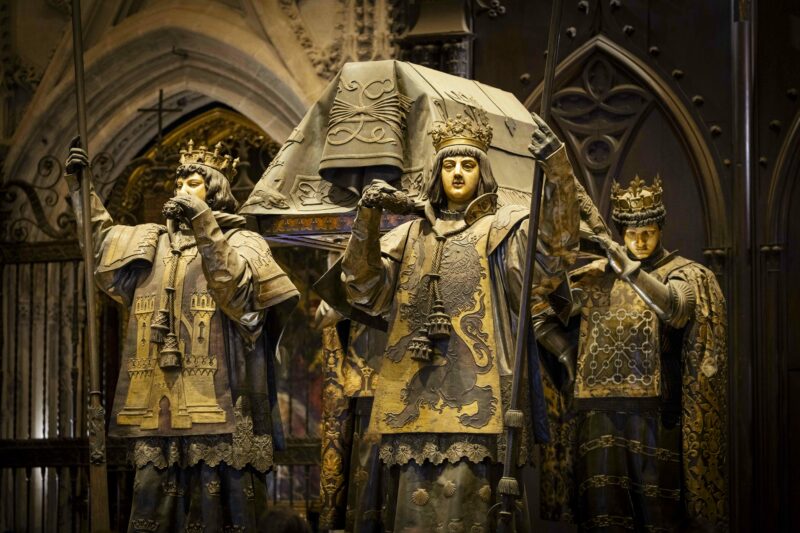
The Giralda
The 12th-century square minaret that became an elaborate cathedral tower with a wind vane on top is now the symbol of Seville. It's about 35 floors high, and you can get to the top by climbing an inclined corridor. There are small terraces where you can stop from time to time and take in the view of the city. But the best view of all is from the top of the bell tower.
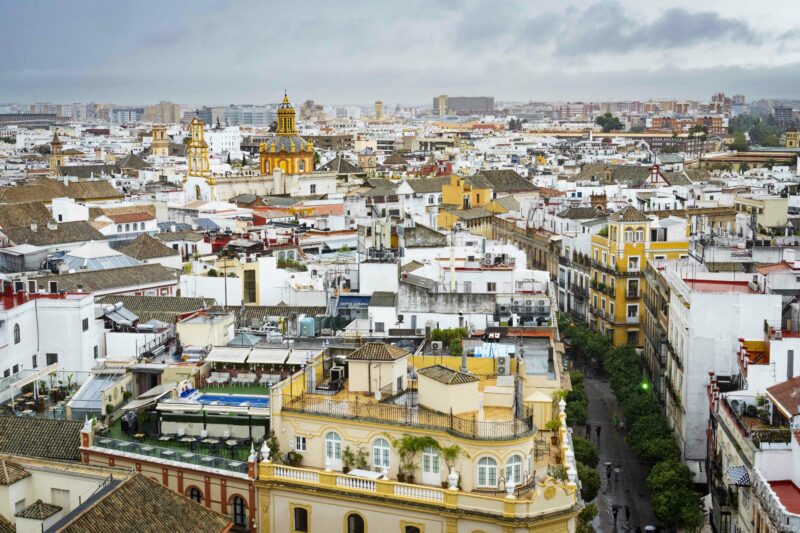
The streets and plazas of Santa Cruz
The Santa Cruz district is a really vibrant place, full of life and colour. You can easily spend hours strolling around the alleys of the Old Barrio enjoying some peace and quiet. Or you can roam around the beautiful plazas and colourful streets searching for authentic souvenirs.
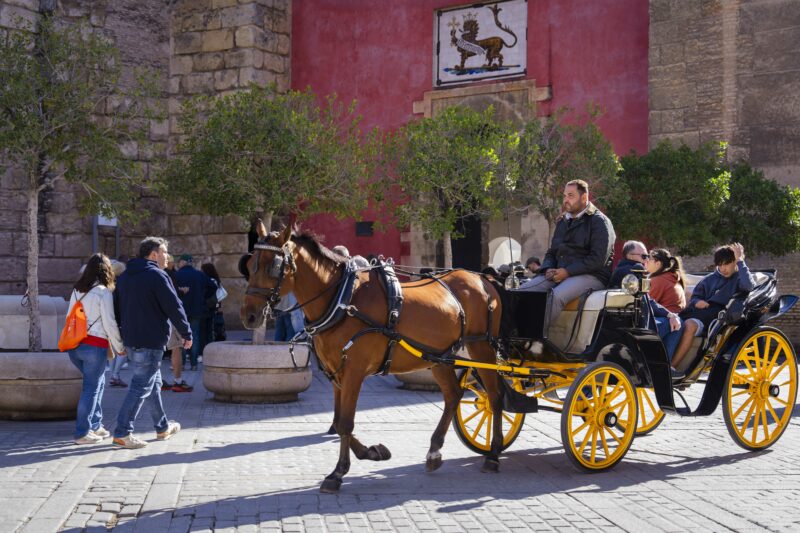
Barrio de Santa Cruz
Back in the Middle Ages, this network of narrow alleys was home to the Jewish community. The white houses with the ochre-coloured frames have central patios full of flowers, as well as wrought-iron features around the windows and doors.
The most beautiful plazas
The city has so many beautiful squares where you can sit back and watch the world go by. Along the beautiful Plaza del Triunfo, you'll find the Real Alcázar and the cathedral. A little further on, you'll come to the Plaza de la Virgen de los Reyes with its impressive lantern, and at the Plaza de San Francisco stands the eastern façade of the Ayuntamiento, the Renaissance building that has served as the town hall since the 16th century.
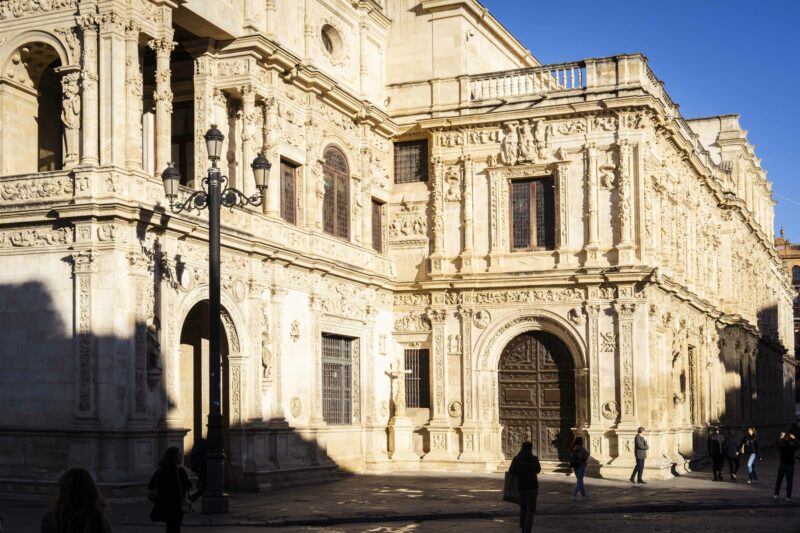
Calle las Sierpes en Calle Velázquez Tetuán
And then it's time to shop for the most authentic souvenirs from Seville! The place to be for amazing multicoloured rosewood fans, hand-embroidered scarves with fringes, and gorgeous flamenco dresses is Calle las Sierpes and Calle Velázquez Tetuán. The best shops are Lina, known for its in-house designs, Foronda for traditional shawls, and Zadi-Dizal for amazing fans.
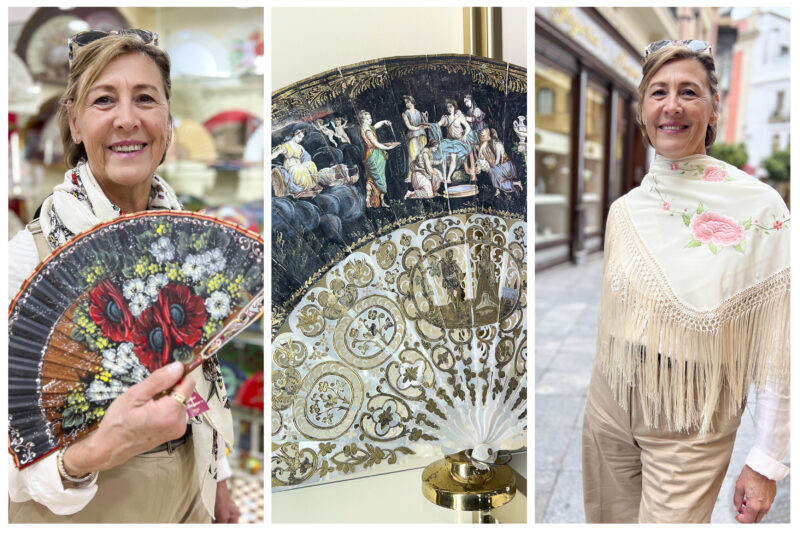
El Arenal: art, bullfights and good food
The El Arenal district is a popular area for tourists and locals alike in Seville. It's home to the renowned La Real Maestranza bullring, which is surrounded by loads of lively cafés and restaurants. Along the river Guadalquivir, you'll find the famous Torre del Oro, while on the northern side of El Arenal, there's the beautiful Museo de Bellas Artes.
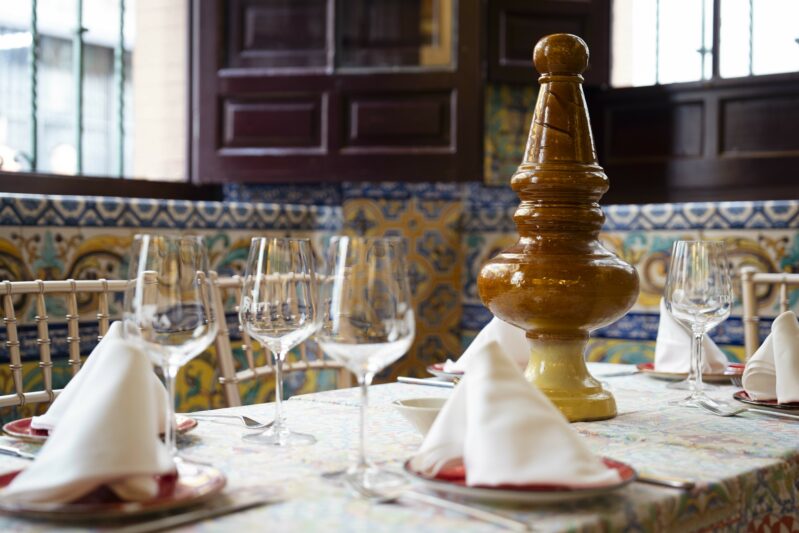
Plaza de Toros de la Real Maestranza
Seville's bullring is the second most important in Spain, after Madrid's. The white-and-yellow arena was built in the 18th century and is one of the oldest in the country, with room for thirteen thousand spectators. During your visit, you'll learn all about the history of bullfighting, the corrida or bullfight itself, and the greatest maestros of all time.
Fancy going to a corrida? The season runs from April to October, but book early if you want to see the best matadors – tickets sell out fast.
The Spanish bullfight
In Spain, bullfighting was originally a profession that gradually evolved into an art form with very strict rules.
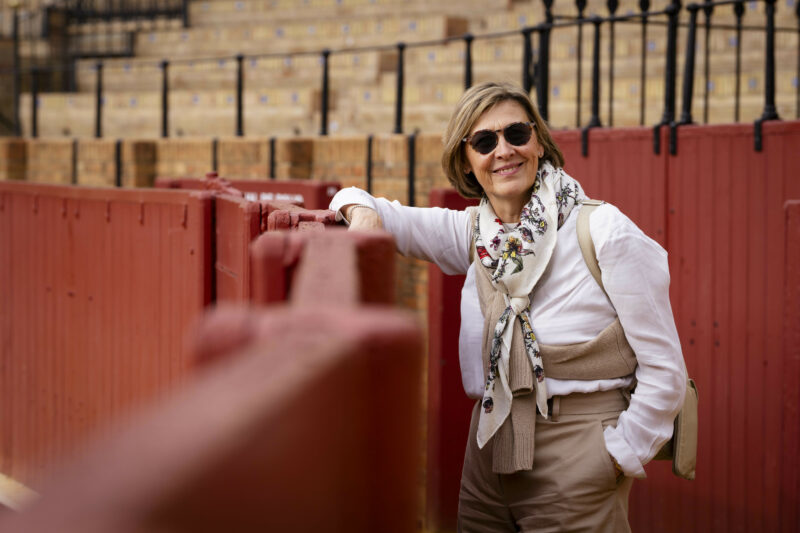
The team
The maestro participates in a bullfight on foot and fights two bulls. He is assisted by a team of two picadores and three banderillos. There are three maestros in each corrida, and six bulls are fought in total. The bulls are between four and six years old, and must be declared fit to participate by the veterinarian.
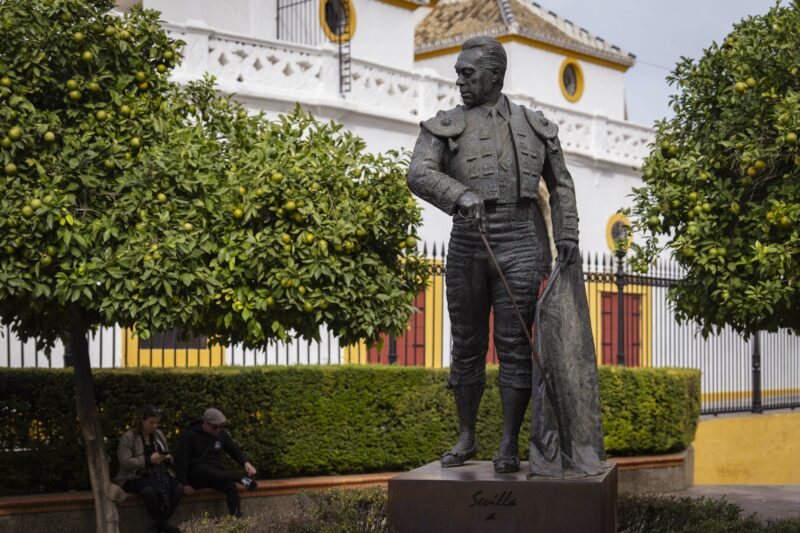
The stages of the bullfight
The bullfight starts with the paseíllo, where the matadores and their teams parade before the audience. Then the first fight begins. Each fight has three parts.
Tercio de varas
The tercio de varas is carried out by the two picadores who, on horseback and armed with a lance, wound the bull. In the meantime, the matador observes how the bull reacts and moves. The bleeding relieves the pressure in the animal's body that builds up during the transport of the animal to the arena.
Tercio de banderillas
At this stage, the three banderillas each insert a pair of banderillas - arrow-like sticks - into the bull's neck. This weakens the animal through blood loss but also makes it more aggressive.
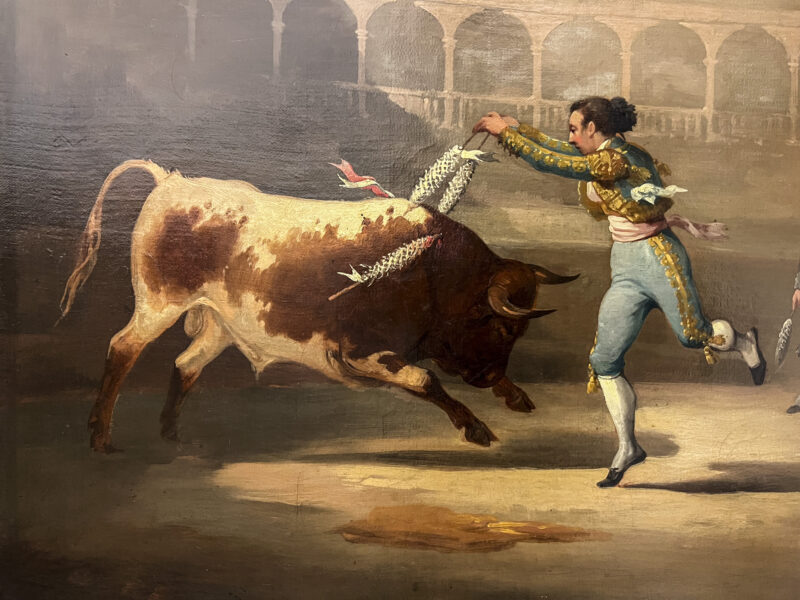
Tercio de la muerte
The tercio de la muerte is the final act of the bullfight, where the bullfighter and the bull face off against each other. The matador performs a few moves armed with a muleta – a cloak on a stick – and an estoque – a curved sword. He showcases his artistic skills, courage, daring and expertise.
Then comes the estocada, the moment when the matador strikes to kill the bull. This is done face-to-face. To ensure a quick death, the matador thrusts his sword into the cavity between the front ribs and through the aorta.
Torre del Oro
The Torre del Oro is perched on the banks of the Guadalquivir, and along with the Giralda, is a symbol of the city of Seville. The tower was built by the Almohads in the 13th century and was part of the city's fortifications. Peter the Cruel added a small central tower in the 14th century, and in the 18th century, a dome was put on top. The tower used to be covered in gold tiles - hence its name!
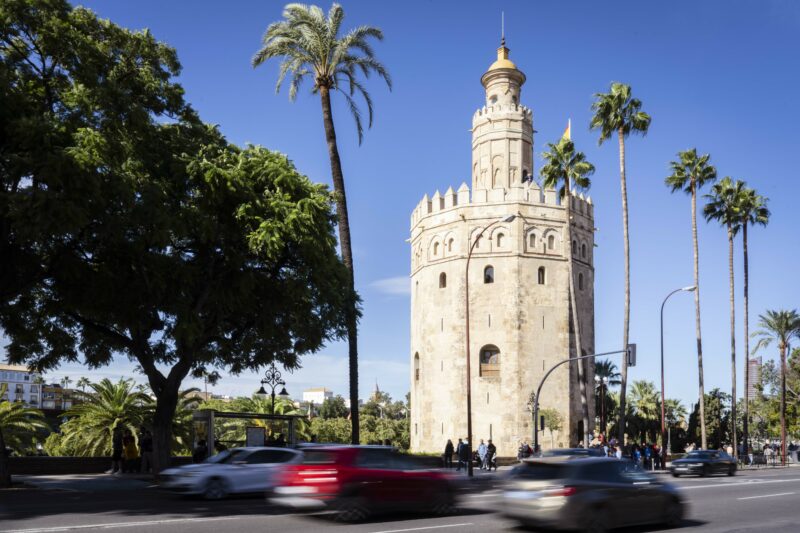
Museo de Bellas Artes
After the Prado in Madrid, the Museo de Bellas Artes is Spain's second most important pinacotheque.It has major works from the Middle Ages to the early 21st century on display across 14 rooms.
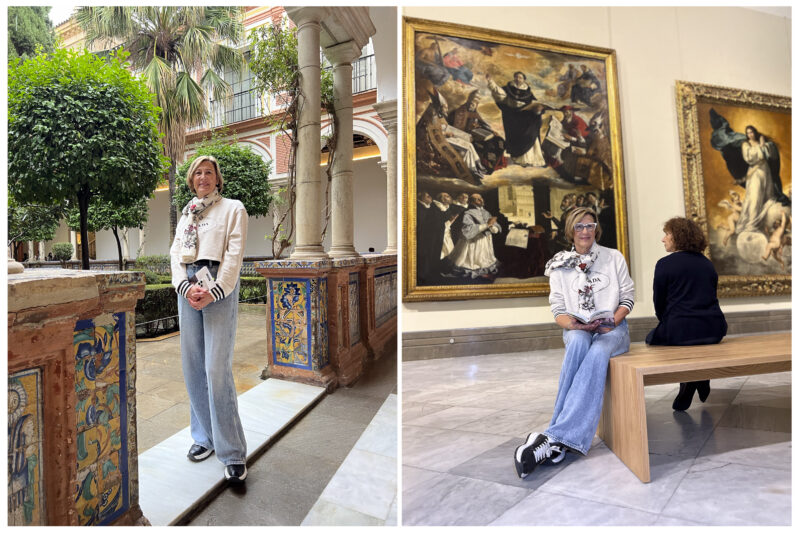
15th century art
After Ferdinand III conquered Al-Andalus, art from Christianity was integrated into local culture. Paintings and sculptures started showing religious figures, and artists from the north moved to the Iberian Peninsula and started a local school of painting.
Renaissance art
Back in the 16th century, trade with the Americas really picked up. The city of Seville expanded, and its economy and culture boomed. Flemish and Italian artists brought new styles and techniques in painting and sculpture. Lots of works by artists from the Netherlands were brought to Spain by merchants and members of the nobility serving the Spanish crown. By the end of the century, several local artists such as Alonso Vásquez and Francisco Pacheco had made a name for themselves.
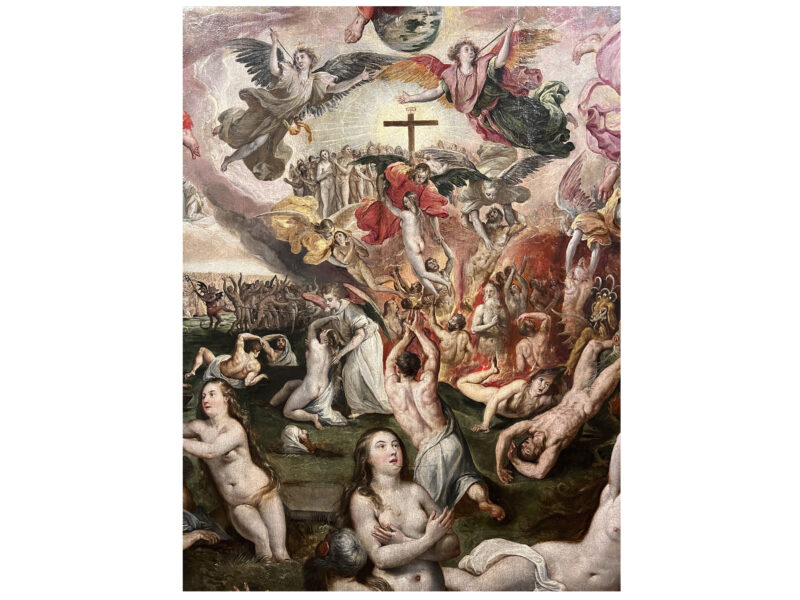
The baroque
Mannerism and naturalism had broken with the more complex compositions of the Renaissance by the early 17th century. The Baroque that followed wanted to move away from the ideal images of the past. There was a return to more realistic representations where the viewer became emotionally involved. Some of the most notable artists of the period include Diego Velázquez, Murillo, Zubarán and Juan de Valdes Leal, and the museum dedicates entire rooms to their works.
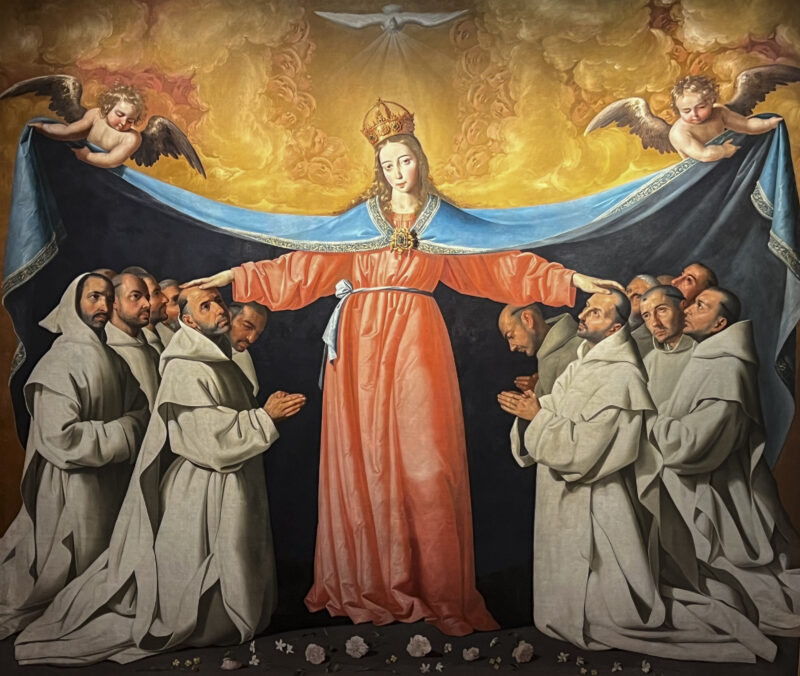
The martyrs of Japan
The three wooden figures depicting the martyrs of Japan really stuck in my memory. Their story goes back to 5 February 1597, when 26 Christians, laymen and monks, were crucified in Nagasaki, Japan. Three of them were Jesuits who were born in Japan but had converted to Christianity. They were beatified 30 years later and finally canonised in 1862. The Japanese martyrs were hugely worshipped and depicted both in statues and paintings in the 17th century. In 1928, three wooden figures of the Japanese Jesuits were donated to the museum. They are not dated but the wooden figures were probably made in the 17th century.
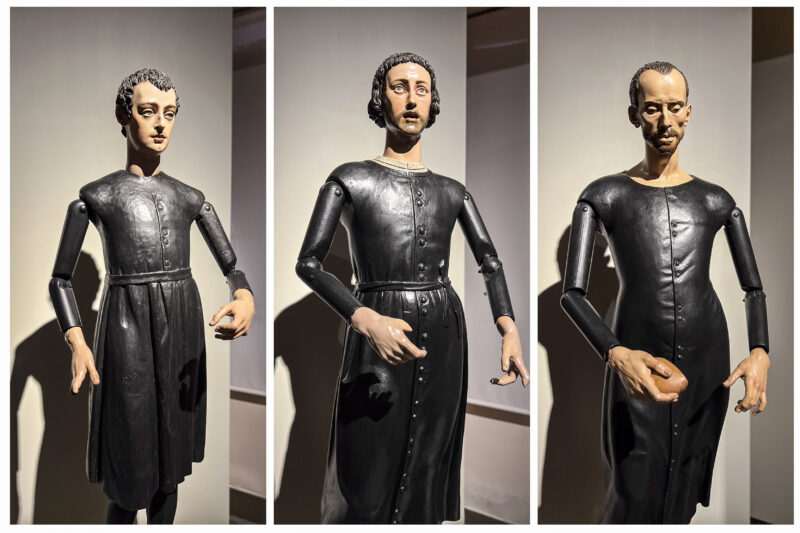
Iglesia de la Magdalena
The 17th-century church, which has been beautifully restored, was built on the foundations of a Gothic mudéjar church. It's home to an impressive collection of artworks, including a main altarpiece which is only surpassed in size by that of Seville Cathedral. The church also houses two paintings by Zubarán and several canvases by Juan de Valdés Leal.
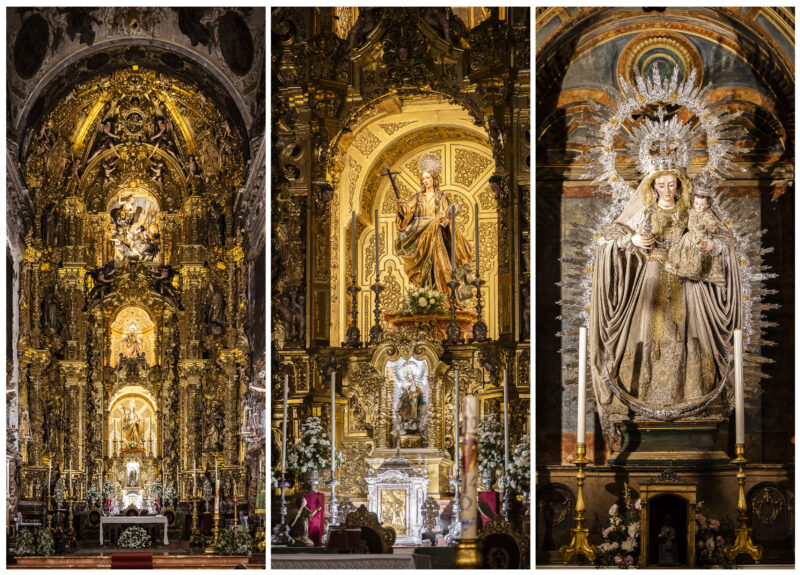
Triana: potteries and azulejos
Triana is Seville's working-class neighbourhood, but that doesn't make it any less interesting to explore. A stroll through its charming streets will lead you to countless potters' workshops where the traditional azulejos (ceramic tiles) are crafted. You'll get to see artists in action and even participate in pottery workshops.
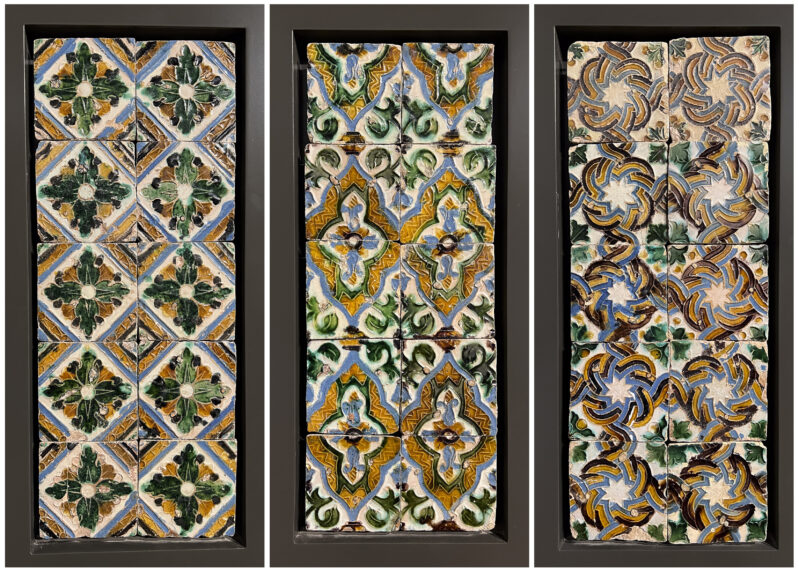
Iglesia de Santa Ana
King Alfonso X ordered the construction of the parish church of Santa Ana in 1266 after being cured of an eye disease thanks to the saint’s intervention. Built in Gothic mudéjar style, it was the first church in Seville to be built from scratch. The church was damaged by the 1755 Lisbon earthquake and subsequent renovations incorporated baroque elements in certain parts of the church. The main altarpiece dates from the 16th century and contains images of St Ana, the Virgin Mary and the Christ Child.
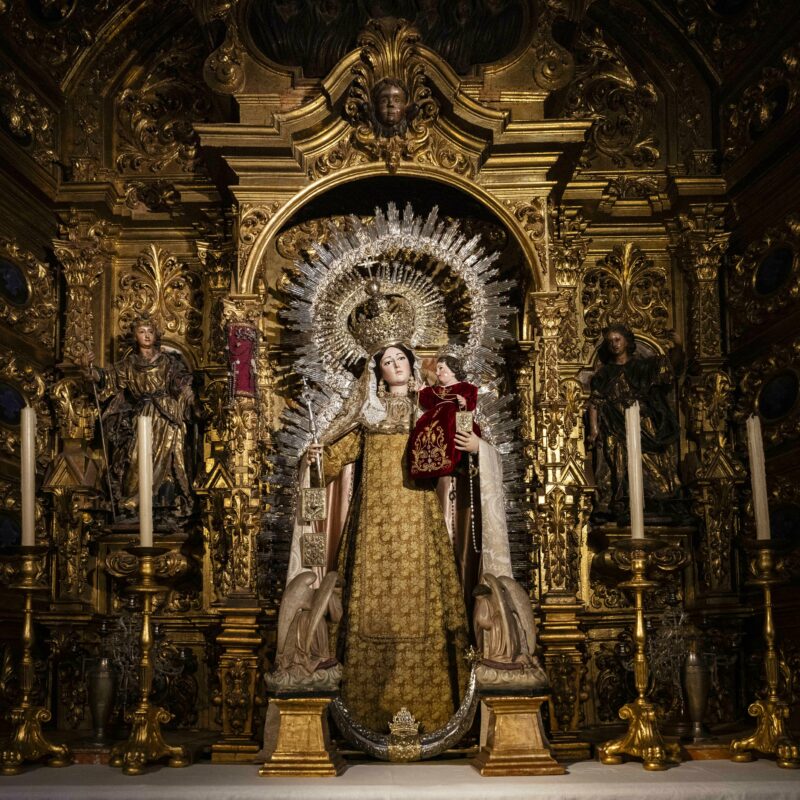
Seville, birthplace of flamenco
Flamenco dance is a passionate expression of life, love, joy, sorrow and everything in-between! It has its roots in the working-class district of Triana in the city of Seville. The dancers move with passion, following the rhythm of the guitar with quick, precise footwork and lively hand clapping. And the musicians? They're just as important a part of flamenco as the dancers themselves. Each musician brings their own unique expression of emotion, be it through the lyrics they sing, the way they strum their guitar.
Museo del Baile Flamenco
This little museum gives you a good overall introduction to flamenco, with everything from its origins to the different styles and most famous artists. There are also temporary exhibitions of flamenco paintings and sculptures. And down in the basement, you can watch flamenco shows or take part in classes.
A captivating flamenco show
A visit to Seville is not complete without experiencing the passion and excitement of a live flamenco show! You can attend performances in a peña (a flamenco club) or a tablao. In a tablao, singers and dancers perform on a wooden stage while the audience is enjoying dinner or just a drink.
El Arenal
We went to see a show at Tablao El Arenal, which is one of the best tablaos in the world. It's in the district of El Arenal, between the arena and the Giralda.We enjoyed a breathtaking performance where emotion, power and passion were palpable.
